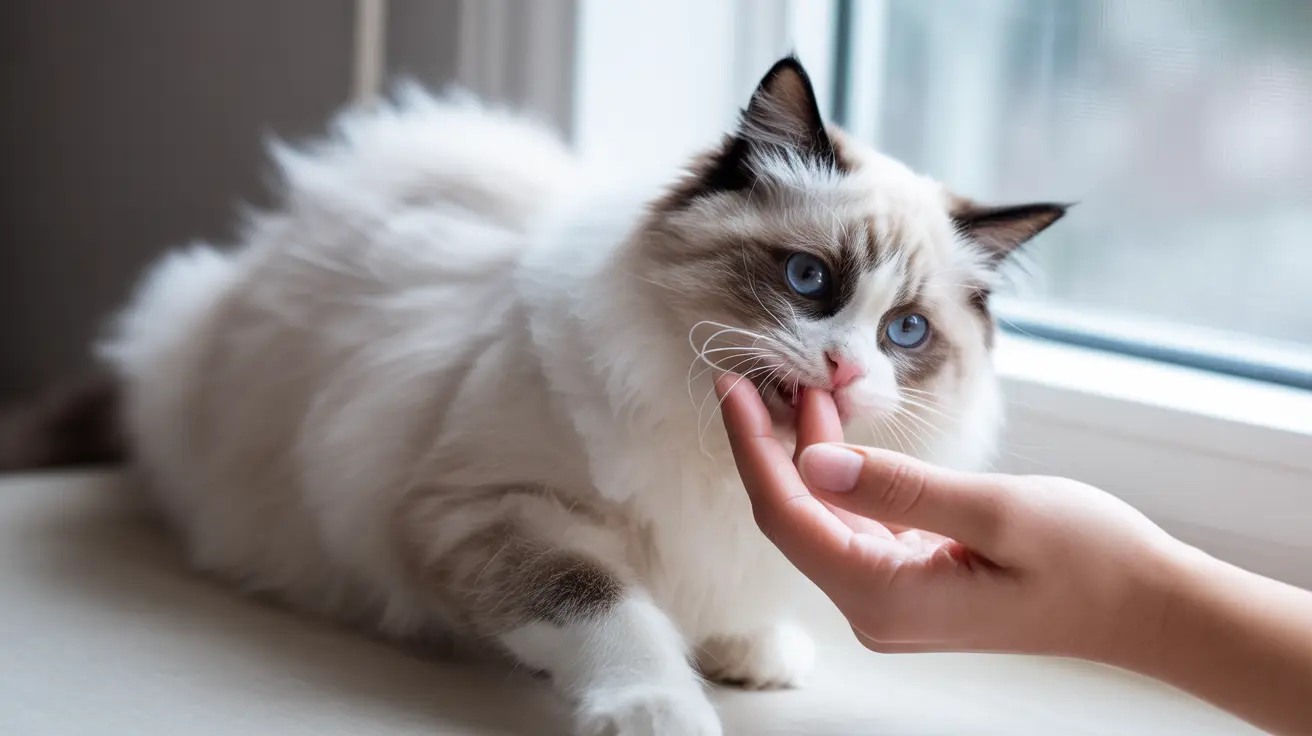If you've ever been gently nibbled by your cat during a petting session, you might have wondered about the meaning behind this curious behavior. Cats nibble on their human companions for various reasons, ranging from expressions of affection to signals of discomfort. Understanding why cats engage in this behavior can help strengthen your bond with your feline friend and ensure you're responding appropriately to their communication attempts.
The Science Behind Cat Nibbling Behavior
Cat nibbling, often referred to as "love bites" in affectionate contexts, is deeply rooted in feline social behavior. This action stems from kittenhood, where young cats learn about their environment and social boundaries through gentle biting during play with littermates. When directed at humans, these nibbles can carry multiple meanings depending on the context and situation.
Affectionate Nibbling: Love Bites Explained
When your cat delivers gentle nibbles during cuddle sessions, they're often expressing affection. These "love bites" typically occur alongside purring, kneading, and other signs of contentment. This behavior mimics how mother cats groom and show affection to their kittens, indicating that your cat views you as part of their family group.
Common Reasons for Cat Nibbling
Playful Behavior and Hunting Instincts
Young cats and kittens frequently nibble during play as they practice their hunting skills. This natural behavior helps them develop coordination and learn bite inhibition. If your cat nibbles while chasing your hands or feet, they're likely engaging in playful predatory behavior.
Overstimulation Response
Sometimes cats nibble when they become overstimulated during petting. This usually happens when the physical contact becomes too intense or continues for too long. Watch for signs like tail twitching or skin rippling, which often precede these nibbles.
Communication and Attention-Seeking
Cats may use nibbling as a way to communicate specific needs or desires. Whether they're hungry, want to play, or simply seek attention, a gentle nibble can be their way of saying "Hey, notice me!"
When to Be Concerned About Cat Nibbling
While most nibbling is harmless, certain situations warrant attention. If your cat's nibbling suddenly becomes more frequent or aggressive, it could indicate:
- Physical pain or discomfort
- Anxiety or stress
- Medical conditions requiring veterinary attention
- Behavioral issues needing professional intervention
Managing and Responding to Cat Nibbling
To maintain a positive relationship with your cat while discouraging unwanted nibbling:
- Provide appropriate toys for play and hunting simulation
- Learn to recognize your cat's body language
- Establish consistent boundaries during play
- Never punish nibbling, as this can damage trust
- Consider consulting a veterinarian if nibbling becomes problematic
Frequently Asked Questions
Why do cats nibble on me gently during petting or cuddle time?
Gentle nibbling during petting often indicates affection or social bonding. This behavior, known as "love bites," mirrors how cats interact with their family members in the wild and is usually accompanied by purring and relaxed body language.
How can I tell if my cat's nibbling is a sign of affection or overstimulation?
Watch your cat's body language. Affectionate nibbles are usually gentle and accompanied by purring and relaxed posture. Overstimulation nibbles often come with warning signs like tail twitching, skin rippling, or flattened ears.
What should I do if my cat suddenly starts nibbling or biting during play?
Redirect their attention to appropriate toys and end play sessions if nibbling becomes too intense. This helps teach your cat that hands are not toys and reinforces proper play behavior.
Can nibbling indicate that my cat is in pain or stressed?
Yes, sudden changes in nibbling behavior, especially if accompanied by other behavioral changes, can indicate pain or stress. If you notice this, consult with your veterinarian to rule out medical issues.
How can I teach my cat to stop nibbling on my hands or fingers?
Consistently redirect nibbling to appropriate toys, provide plenty of environmental enrichment, and avoid using hands as play objects. If the behavior persists, consider consulting with a feline behaviorist for personalized guidance.






